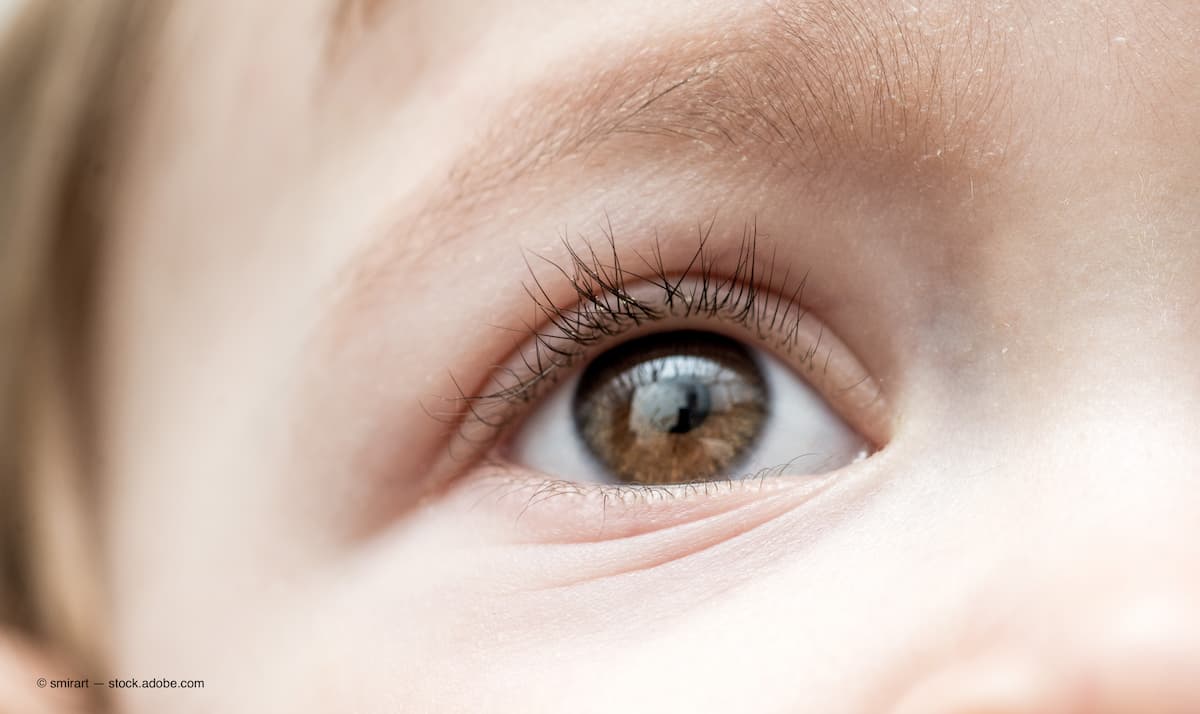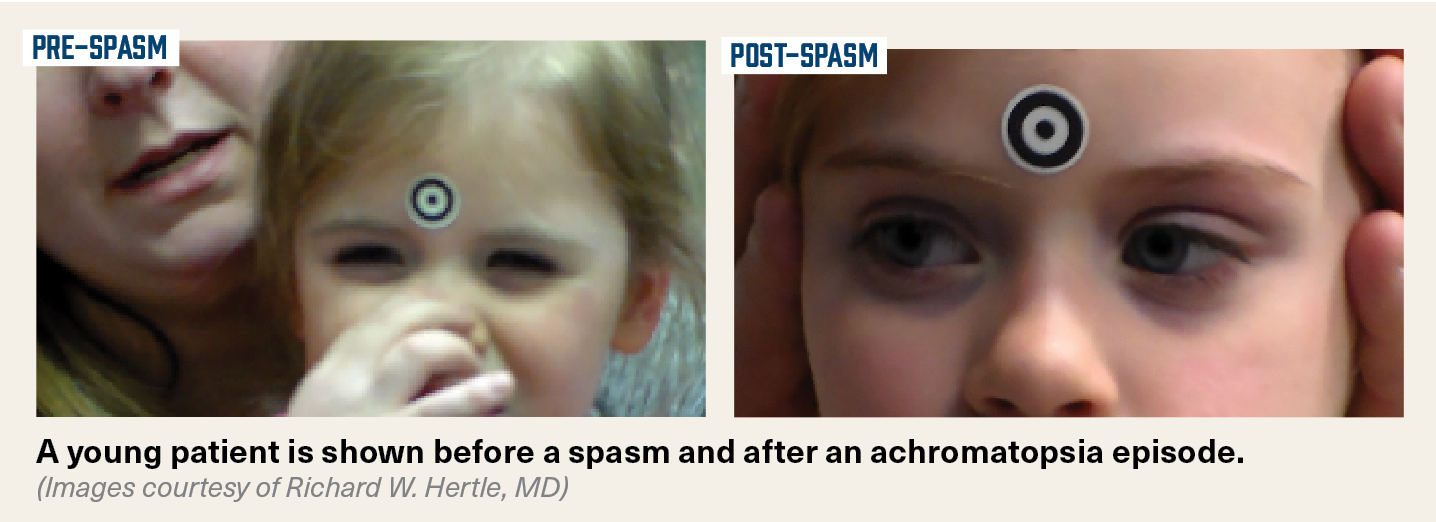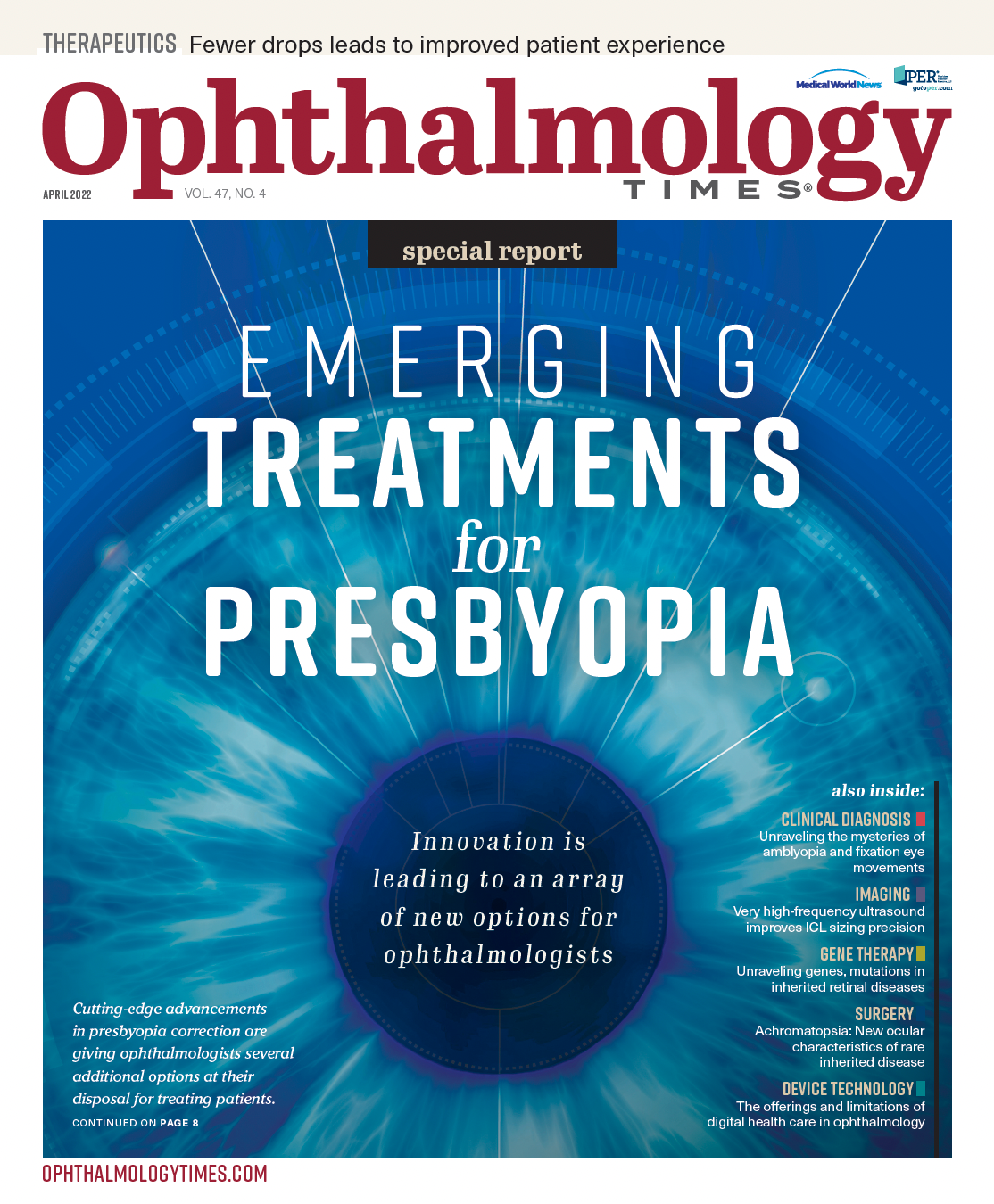Publication
Article
Digital Edition
Achromatopsia: New oculomotor characteristics of rare inherited disease
Author(s):
Treatments include tinted spectacles and/or contact lenses, low-vision aids, atropine drops, and patching for amblyopia, as well as eye muscle surgery for the nystagmus or any anomalous head posture and associated strabismus.
Reviewed by Richard W. Hertle, MD
Achromatopsia is a rare autosomal recessively inherited genetic disease that affects primarily retinal cone cells and has an incidence of approximately 1 in 30,000. In addition to poor vision, affected children have intense blepharospasm, photophobia, dyschromatopsia, and infantile nystagmus syndrome (INS).

Important special testing includes color vision, optical coherence tomography (OCT), fundus autofluorescence, visual fields, electroretinography (ERG), and genetic testing, according to Richard W. Hertle, MD, chief of pediatric ophthalmology and director of the Children’s Vision Center at Children’s Hospital Medical Center in Akron, Ohio.
Hertle also uses eye movement recordings to characterize the nystagmus and its response to treatment.
These treatments include tinted spectacles and/or contact lenses, low-vision aids, atropine drops, and patching for amblyopia, as well as eye muscle surgery for the nystagmus or any anomalous head posture and associated strabismus.

Results of achromatopsia data analysis
Hertle described his experience with 17 patients affected by the disease from 2010 to the present. The data were collected in a prospective database that included routinely obtained results of ERG, eye movement recordings, visual-evoked responses, OCT, photography, contrast sensitivity function, and genetic testing. Other tests in older children included corneal topography, MRI, and laboratory testing when indicated.
He demonstrated typical OCT findings of disruption in the outer retinal segments, especially in the ellipsoidal zone.
All 17 patients (age range from 3 months to 12 years; follow-up, 1-10 years) underwent eye muscle surgery; 13 for an associated chin-down head posture, treating a characteristic up-gaze eccentric gaze null position. This included bilateral superior rectus recession and inferior oblique myectomy. In the remaining 4 patients, 2 had bilateral horizontal rectus surgery for a head posture and strabismus, and 1 each had bilateral horizontal rectus surgery for strabismus alone.
According to Hertle, all 17 patients had INS, with 86% having a newly described recording characteristic of achromatopsia, known as a dual jerk waveform, consisting of a high-frequency pendular oscillation as part of the nystagmus slow phase.
The patients did not have vergence damping—that is, they did not get better when their eyes converged—or a latent component
that is usually present in 40% to 50% of patients with INS, which can make them look like they have fusion maldevelopment nystagmus syndrome, when in fact they have INS. They also did not have a spontaneous change in direction/intensity of the nystagmus (periodicity). In addition, 40% had amblyopia and 94% had a head posture (predominantly chin down), Hertle reported.
The average preoperative visual acuity in all patients was poor (ie, 20/280). Postoperatively, the patients had a significant change, 20/180, which is a full LogMAR line of vision improvement. Hertle showed a before-and-after video of a patient who had markedly improved fixation, decreased blepharospasm, and nystagmus 6 months after surgery. This improvement is concurrent with a significant decrease in the dual jerk component of the slow phase.
Hertle said he believes contrast sensitivity is a superior measure of the visual system compared with optotype vision in patients with nystagmus. The results indicated that at the lower spatial frequencies, there was an improvement after eye muscle surgery, whereas no improvement was observed at higher spatial frequencies.
Novel findings from this study included a dominant dual jerk INS waveform; an up-gaze eccentric null position, with compensatory chin-down head posture and improved binocular acuity; contrast sensitivity; anomalous head posture; nystagmus; photophobia; and blepharospasm after eye muscle surgery.
Hertle theorized that the dual jerk waveform may be due to developmentally disrupted calibration between the retina, the nucleus of the optic tract, and the ocular motor system.
Richard W. Hertle, MD
E: rhertle@akronchildrens.org
This article is adapted from Hertle’s presentation at the Cleveland Eye Bank Foundation Virtual Symposium. He has no financial interest in this subject matter.

Newsletter
Don’t miss out—get Ophthalmology Times updates on the latest clinical advancements and expert interviews, straight to your inbox.





